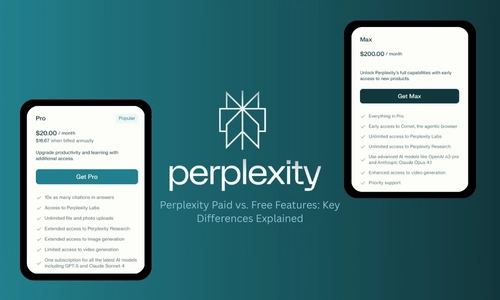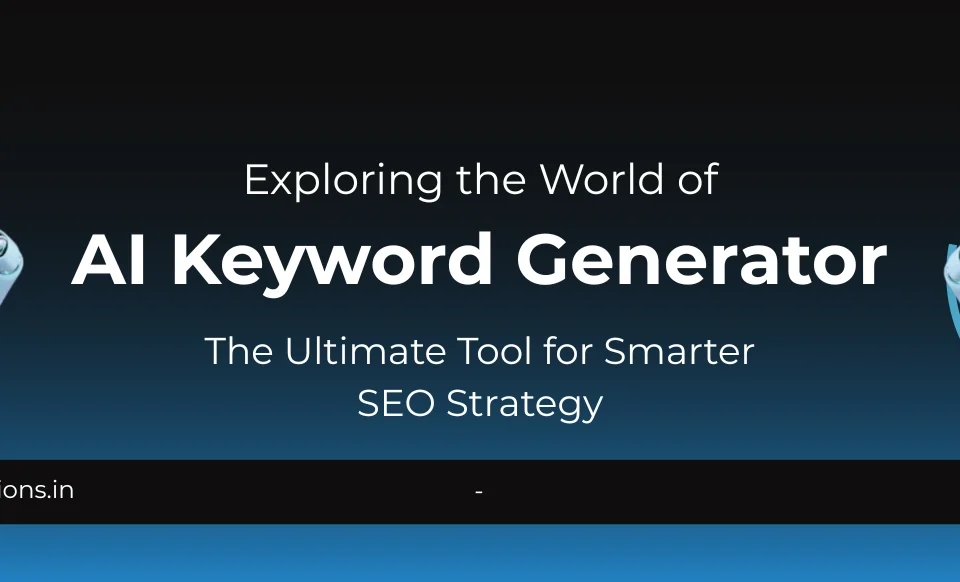Perplexity Paid vs. Free Features: Key Differences Explained

Perplexity vs ChatGPT: Which is Best AI Model for You?
September 16, 2025
The Future of AI in Marketing
November 4, 2025Perplexity AI stands out as a powerful search engine driven by artificial intelligence, blending conversational responses with real-time web data. When comparing Perplexity Paid vs. Free Features, users often weigh the balance between accessibility and advanced capabilities. The free tier offers a solid entry point for casual exploration, while the paid Pro version unlocks deeper tools for intensive tasks. This guide dives into the distinctions to help you decide which fits your needs best.
What is Perplexity AI?
Perplexity AI revolutionizes how people search for information online. Unlike traditional engines that deliver lists of links, this platform provides direct, cited answers in a chat-like format. Launched in 2022, it has quickly gained traction among researchers, students, and professionals for its accuracy and efficiency. By leveraging large language models, Perplexity pulls from the web to generate responses that are both informative and up-to-date.
The tool’s core strength lies in its ability to handle complex queries with context. For instance, you can ask follow-up questions in a threaded conversation, making it feel more like talking to an expert than typing into a search bar. As of 2025, Perplexity continues to evolve, incorporating feedback to refine its algorithms and expand features. Whether you’re fact-checking a news item or delving into academic topics, it streamlines the process significantly.
Exploring the Free Plan
The free version of Perplexity AI serves as an excellent starting point for anyone curious about AI-assisted search. It democratizes access to sophisticated technology without requiring a subscription, allowing users to test the waters before committing financially.
Key Features of the Free Plan
At no cost, users enjoy unlimited quick searches, which handle straightforward queries with speed and precision. These searches pull from a standard in-house model, delivering responses complete with source citations for verification. You can also upload files like images or documents, though with restrictions—typically up to 40 MB per file and around three uploads daily. This enables basic analysis, such as extracting insights from a PDF or CSV.
Follow-up questions are supported, with a limit of about five every four hours, encouraging deeper dives into topics. The interface includes personalization options if you create an account, like saving search history and organizing queries into collections. Ads appear in answer cards, but they don’t overly disrupt the experience for light users.
Limitations to Consider
While generous, the free plan has boundaries that might frustrate frequent users. Pro searches, which tap into advanced models for more nuanced answers, are capped at roughly five per day. This means complex tasks requiring in-depth reasoning or multiple angles could hit a wall quickly. File retention lasts only 30 days, and data might be used for model training unless you opt out.
The context window is fixed at 128,000 tokens, sufficient for most queries but limiting for extensive documents. Response times average around 1.7 seconds for large prompts, which is respectable but not optimized for high-volume work. Without access to premium models like GPT-4o or Claude 3.5 Sonnet, outputs might lack the sophistication needed for professional-grade content.
Diving into the Pro Plan
For those seeking enhanced performance, the Pro plan elevates Perplexity AI into a robust productivity tool. Priced at $20 monthly or $200 annually (saving effectively two months), it caters to power users who demand more from their AI interactions.
Advanced Features Available
Pro subscribers gain over 300 Pro searches daily, essentially removing barriers for intensive research. This includes toggling between top-tier models such as GPT-4o, Claude 3 Opus, Sonnet, Gemini 2.5 Pro, Grok-4, and Perplexity’s own Sonar variants. Such flexibility allows tailoring responses—for example, using Claude for layered reasoning or GPT for creative tasks.
File handling expands dramatically with unlimited uploads up to 50 MB each, perfect for analyzing lengthy reports or datasets. Image generation becomes possible through integrations like DALL-E 3, Stable Diffusion XL, and Flux1 Pro, enabling visual aids directly from queries. The dynamic context window stretches up to 1,000,000 tokens via the Sonar-Deep-Research model, handling massive inputs seamlessly.
Additional perks include $5 in monthly API credits for custom integrations, ad-free browsing, and priority support through channels like Discord. Chat histories persist for 90 days, and privacy is bolstered with default opt-out from data training. Features like Perplexity Pages offer advanced customization for organizing outputs, while Spaces allow up to 100 file uploads per collection.
Benefits for Users
Upgrading translates to faster, more accurate results—latency drops to about 1.3 seconds for hefty prompts. Professionals in fields like research or content creation appreciate the ability to generate structured deliverables, such as reports or charts, via Perplexity Labs. The “Focus” feature targets specific sources, like academic papers or Reddit threads, refining searches further. Overall, it boosts efficiency, making it ideal for sustained, high-stakes work.
Breaking Down the Key Differences
To clarify the contrasts, let’s examine core areas side by side.
In terms of search capacity, the free tier’s handful of Pro searches pales against the Pro’s hundreds, impacting how much depth you can achieve daily. Model selection is a game-changer; free users stick to basics, while Pro offers a suite of cutting-edge options for superior quality.
File management differs starkly—limited uploads and smaller sizes in free versus unlimited and larger in Pro. Creative tools like image generation are Pro-exclusive, adding value for visual content needs. Privacy and retention favor Pro with longer storage and better defaults.
Performance metrics show Pro’s edge in speed and context handling, crucial for complex analyses. Ads and support levels also tilt toward paid users for a smoother experience.
When Should You Upgrade?
Deciding to go Pro depends on your usage patterns. If you’re a student handling occasional assignments or a hobbyist exploring topics, the free plan suffices. It provides ample value without expense, letting you sample advanced features sparingly.
However, if research forms a core part of your routine—think academics poring over papers, writers crafting articles, or analysts sifting data—the limitations could hinder productivity. Frequent hits on search caps or needing premium models for better accuracy signal it’s time to upgrade. Professionals benefit most, as the tools align with demanding workflows, potentially saving hours weekly.
Consider trial periods or sampling via the free tier’s Pro searches to gauge fit. Many find the investment worthwhile for the enhanced depth and convenience.
Evaluating Pricing and Value
At $20 monthly, Perplexity Pro competes directly with similar services like ChatGPT Plus or Claude Pro, offering comparable pricing but unique search-focused strengths. The annual option at $200 provides savings, appealing to long-term users.
Value shines through in time saved and quality gained. For instance, unlimited file analysis alone can justify the cost for document-heavy roles. API credits add developer appeal, while ad removal enhances focus. Compared to free, the paid tier feels like an upgrade from economy to business class—more room to maneuver and better amenities.


